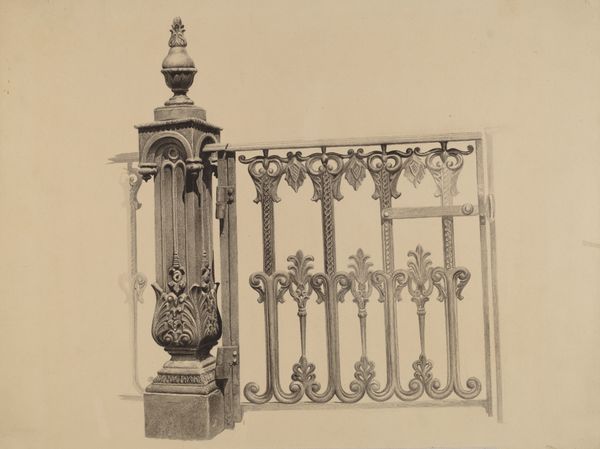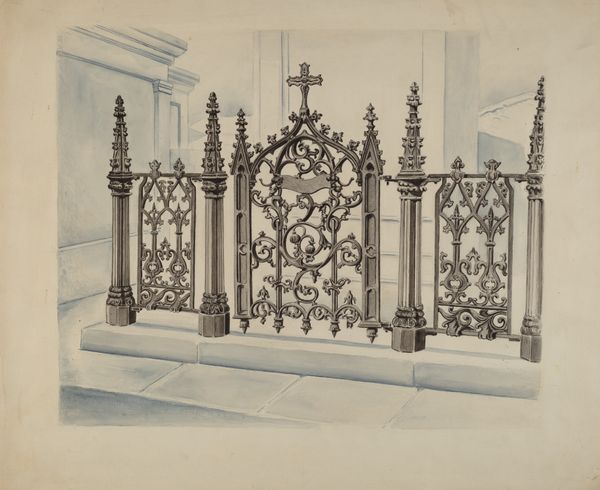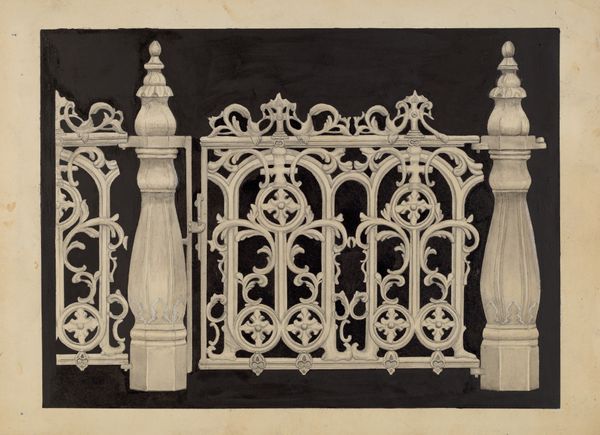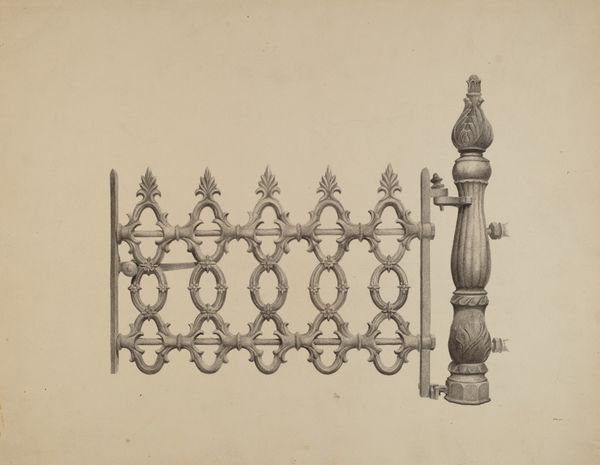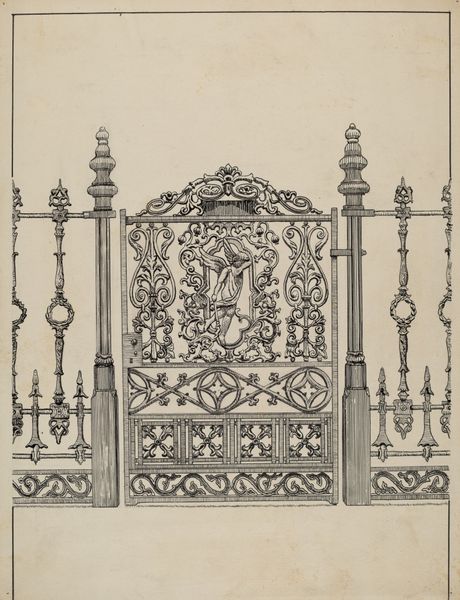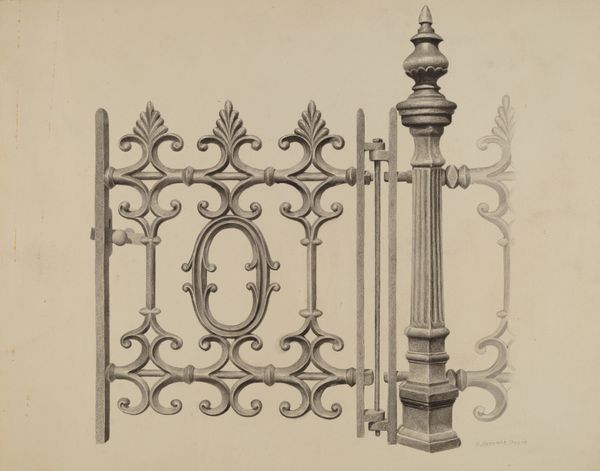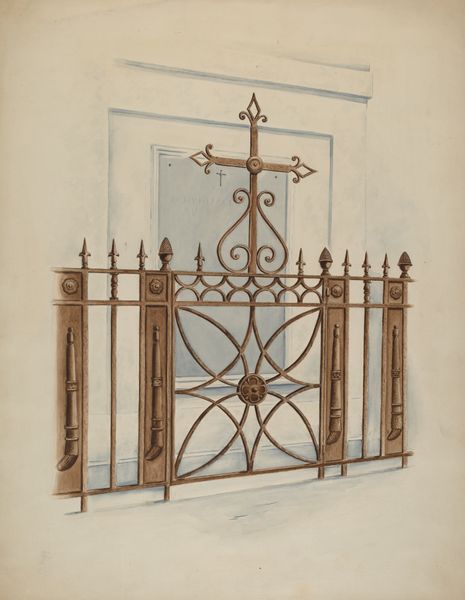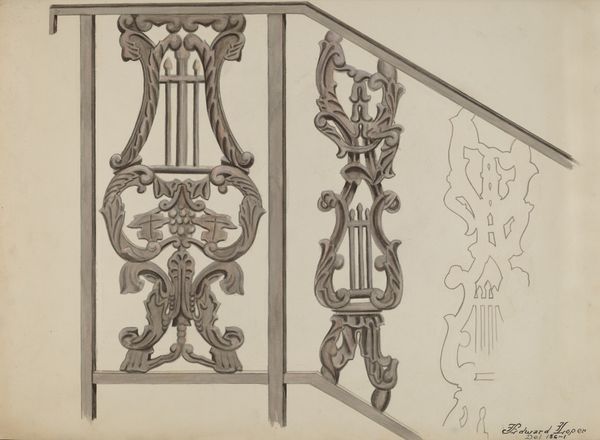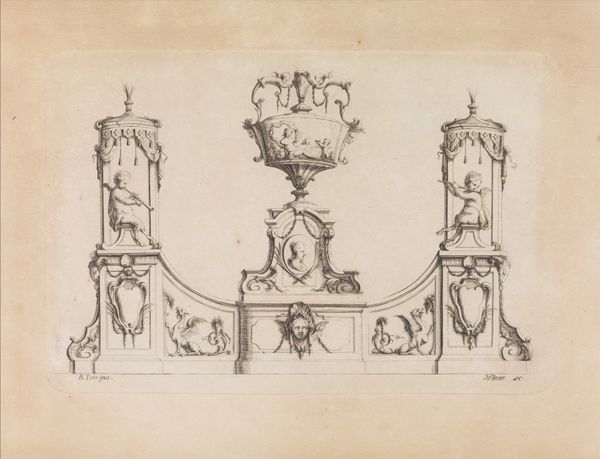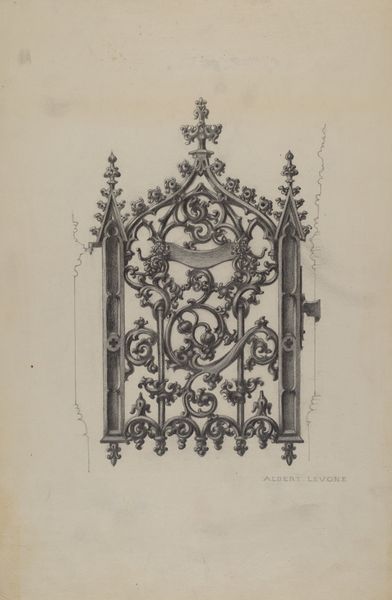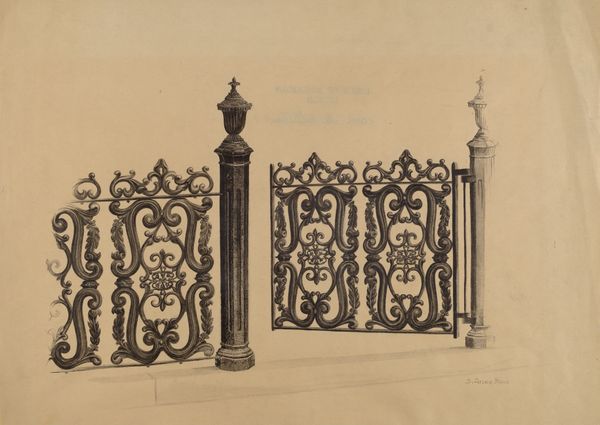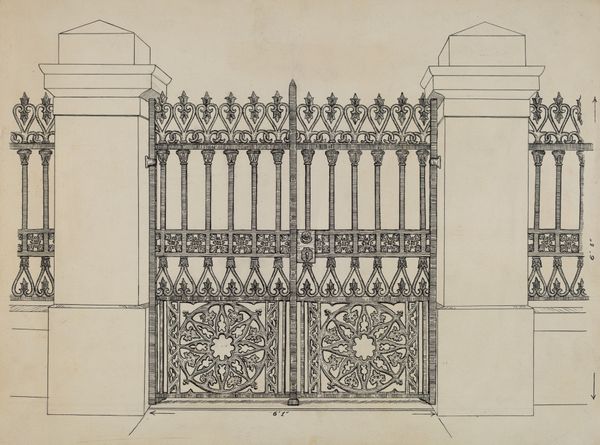
drawing, metal, pencil
#
pencil drawn
#
drawing
#
metal
#
pencil drawing
#
geometric
#
pencil
#
line
Dimensions: overall: 37.5 x 45.1 cm (14 3/4 x 17 3/4 in.)
Copyright: National Gallery of Art: CC0 1.0
Editor: This drawing, "Cast Iron Gate" by Al Curry, circa 1936, is quite striking in its detail. The elaborate ironwork contrasts with the starkness of what appears to be a building facade. What do you see in this piece beyond just a depiction of architectural detail? Curator: I see a silent commentary on accessibility and social division. A gate, by its very nature, controls access, raising questions about who is included and excluded. Given the date, the drawing could subtly address socio-economic inequalities prevalent during the Depression era. How might the geometric lines, contrasting with the ornate details, play into that? Editor: So, you're saying the contrasting styles represent the different realities experienced at the time? The sharp lines of the architecture versus the decorative ironwork acting almost as a barrier? Curator: Precisely! The drawing invites us to consider how physical structures embody social hierarchies and control. Who designs these gates? For whom are they built? Whose labor produces them? These questions urge us to investigate power dynamics that permeate everyday spaces. Is the gate welcoming, or intimidating? Editor: It is quite ornate, maybe even intimidating… The filigree could almost represent restriction rather than beauty. It makes you consider what lies beyond it, and why there is a barrier in the first place. Curator: Yes, it's not just about aesthetic appreciation. It's about understanding the visual language that perpetuates social norms. Considering Curry's background might shed further light. Were they documenting or critiquing these structures? What statement might they have wanted to express? Editor: I see it now – art as an expression of something far beyond just what's depicted, it also provides an historical narrative of social contexts. Curator: Exactly. Looking at art through a lens of power and social structures helps reveal underlying narratives.
Comments
No comments
Be the first to comment and join the conversation on the ultimate creative platform.
